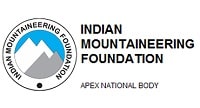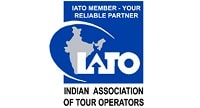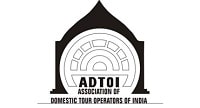South India Discovery itinerary
Day 1: Arrive Cochin
Arrive Cochin by flight meet and assistance by our representative and transfer you to hotel.
Cochin:The principal port for southwestern India, Cochin has been a trading post for centuries and the Portuguese, Dutch and British influences remain evident. The city is a series of islands with a palace, old spice warehouses, Jewish synagogue and churches in Fort Cochin.
Afternoon is at leisure.
Overnight in Cochin
Meal: No Meals
DAY 2 COCHIN
Morning proceed for sightseeing of Cochin.
Known as the ‘Queen of the Arabian Sea’, Kochi, formerly called Cochin, is a city founded on trade and its streets still harbour a rich mix of cultural influences and styles. A morning sightseeing tour today takes in Fort Cochin, the oldest European settlement in India, as well as the Church of St. Francis, where Vasco de Gama was buried for a short while. In the Portuguese built Mattancherry Palace (closed on Friday and Saturday) you will find some of the finest murals in India, and returning to the hotel via the cantilevered Chinese Fishing Nets.
Afternoon enjoy Kathakali dance, as a dance form popular today, is considered to be of comparatively recent origin. However, it is an art which has evolved from many social and religious theatrical forms which existed in the southern region in ancient times.
Overnight in Cochin
Meal: Breakfast
DAY 3 COCHIN – ALLEPPEY
After breakfast at the hotel drive to Alleppey (Approx. 55 Kms/ 1 ½ hrs drive) and embark Houseboat.
Cruising Kerala’s backwaters in a traditional ‘Kettuvallom’ (boats made by tying together wooden planks with coconut ropes) is a distinctly unique experience!
These traditional wooden craft, originally used to transport rice along Kerala’s lush green backwaters, have found a new lease of life quietly exploring timeless scenes of palms and paddies, temples and villages. Boats have either one or two fan-cooled bedrooms with attached shower rooms. The sides are open allowing the breeze to flow freely. Your private crew steer the boat, cook lavish local meals and keep you in tea and cold drinks.
As you drift along the backwaters, you can see the local villagers fishing and washing clothes in the canals, as small boys swim alongside the boats shouting ‘Hello’ and ‘Which country?’. Birdlife is plentiful: stork and egret are often spotted. Even a day on a rice boat is a unique and unforgettable experience, but staying overnight, on a boat gives the chance to experience dusk and dawn on the still, reflective waters.
Afternoon board a Canoe cruise for 1 hour to enjoy the wide varieties of sceneries and freshness of narrow canals we want take a canoe trip. This trip will explain every eye of the narrow canals in the backwater. While cruising through these canals in a canoe boat we would come across many interesting aspects of day to day life in the land as well as on water. We can see the flourishing paddy fields, coconut lagoons & isolated islands.
Overnight on Houseboat
Meal: Breakfast, Lunch & Dinner
DAY 4 ALLEPPEY – PERIYAR
Morning drive to Thekkady (Approx. 145 Kms/ 3 ½ hrs drive). Upon arrival check in at hotel.
After noon enjoy boat ride on Lake Periyar. Thekkady is famous for the wildlife sanctuary located here. There is boating facility at Thekkady where the boat will take you around the Wildlife Sanctuary through the Periyar Lake. One can see wild animals during this boat ride but need to be very quiet.
Overnight in Periyar.
Meal: Breakfast
DAY 5 PERIYAR – MADURAI
Early morning proceed for nature walks in the forest as it comes to life with the calls of birds and monkeys. Later enjoy a scenic drive to Madurai ( Approx. 145 Kms/ 3 ½ hrs drive)
Overnight in Madurai.
Meal: Breakfast
DAY 6 MADURAI – TANJORE
Morning proceed for sightseeing of Madurai.
Meenakshi Sundareswarar Temple or Meenakshi Amman Temple is the historic Hindu temple. This temple is among the most famous temples of India which is known throughout the world for its outstanding and impressive architectural beauty. In the Hindu religion temple is the place which is reserved for spiritual and religious activities that include prayers and analogous rites.Sri Meenakshi Amman temple of Madurai is dedicated to Lord Shiva and his consort Goddess Meenakshi (Parvati). Goddess Meenakshi is another form of the Goddess Parvati who is worshiped mainly by South Indians. The utmost architectural wonder of Meenakshi Amman temple is a testimony to the affluent Dravidian Culture. Some of the prominent features of this colossal temple are Temple Architecture, Ashta Shakthi Mandapam, Meenakshi Nayakkar Mandapam, and Porthamarai Kulam Golden Lotus Tank.
Thirumalai Nayak Palace is a 17th century palace was built by King Thirumalai Nayak, one of the Madurai Nayak rulers in 1636 AD in the city of Madurai, India. This Palace was built with the help of an Italian Architect and is a classic fusion of Dravidian, Islamic and European styles.
In the afternoon, drive to Tanjore ( Approx. 195 Kms/ 4 hrs drive).
Upon arrival check in at hotel.
Overnight in Tanjore.
Meal: Breakfast
DAY 7 TANJORE
Moring excursion to Trichy ( Approx. 195 Kms). Trichy is around 60 Kms from Thanjavur.
In Trichy visit The Rock Fort and The Sri Ranganathaswamy Temple.
The Rock Fort Temple is the landmark to the city of Trichy. The fort is situated on the banks of river Kaveri. The Rock Fort is located on a massive rocky outcrop that suddenly spurts amidst flat land. The temple is dedicated to Lord Shiva. The gigantic temple has a 100-pillar hall and a Vimana covered with gold. On the southern face of the rock, there are several beautifully carved rock-cut cave temples of the Pallava period.
The Sri Ranganathaswamy Temple at Srirangam is situated 6 kilometers from the downtown Trichy. The temple is one of the most revered shrines that are dedicated to Lord Vishnu in India. It is the largest temple in the world after the famous Angkor Vat in Cambodia. The temple contains some of the best rock carvings in India.
Later come back to Thanjavur and proceed for sightseeing visiting Brihadeeswara temple, The Palace of Tanjore and Art Gallery.
Brihadeeswarar Temple is a magnificent temple, dates back to the 11th century and was founded by the Chola King Rajaraja Chola I. The temple is considered to be an architectural wonder and is the perfect example of the expertise of the erstwhile Chola rulers, who once ruled over the peninsular India. One of the tallest temples of the world, Brihadeeswarar Temple is designed in such a way that the vimana never ever casts a shadow on the ground at noon.
The Palace of Tanjore stands near the Brihadeswara temple. The Palace is a huge building that has been built through many decades. Nayaks initiated the foundation and primary work of construction around 1550 AD. The Marathas later completed the building during the reign of Peshwas.
The Art Gallery is situated in the Thanjavur Palace only. The place is a must visit in Tanjore as it houses some of the most magnificent and precious Granite and Bronze statues of the Chola period.
Overnight in Tanjore.
Meals: Breakfast
DAY 8 TANJORE – PUDUCHERRY
Morning drive to Kumbakonam ( Approx. 40 Kms/ 1 hrs drive) and visit temples.
Kumbakonam city is famous for various temples which are located in this city. There are various places to visit in Kumbakonam. Mostly, this city hosts pilgrims from many parts of the country. There are 118 temples located in this city. Some of the famous temples which you can visit while in the city are Kumbeswara Temple, Ramaswamy Temple and Sarangapani Temple.
Later drive to Chidambaram (Approx. 75 Kms/ 2 hrs drive)
Chidambaram is a temple town and visited as part of Puducherry - Thanjavur Route or a pilgrimage itinerary of Tamilnadu.
Chidambaram is an important destination for followers of the Hindu god Shiva and exponent of the fearsome, frenzied Tandav Nritya or the dance of destruction, so sightseeing will include the main temple. At the centre of the town is the large Natraj Temple complex dedicated to Shiva as the divine dancer or Natraj, the foremost of all dancers. Spread out over 40 acres this complex, dedicated to the god who is usually represented by the phallic symbol, houses other temples, a tank, and the 'thousand pillared hall’. Non-Hindus are allowed into the complex but not the gold plated sanctum sanctorum that houses the idol.
Then continue to Puducherry ( Approx. 70 Kms/ 2 hrs drive).
Upon arrival check in at hotel.
Overnight in Puducherry.
Meals: Breakfast
DAY 9 PUDUCHERRY
Morning proceed for sightseeing of Puducherry visiting Aurobindo Ashram, Auroville ,Pondicherry museum and Botanical Garden.
The Aurobindo Ashram located on rue de la Marine, is one of the most well known and wealthiest ashrams in India, with devotees from India and all over the world flocking to it for spiritual salvation. Its spiritual tenets represent a synthesis of yoga and modern science. It is open to the public daily between 0800-1200 hrs and 1400-1800 hrs. Children below 3 years of age are not allowed into the ashram and photography is allowed only with permission of the ashram authorities.
Auroville - or the ‘City of Dawn ’ - was conceived as a place of research into the ideal of human unity by the Mother, the spiritual collaborator of Sri Aurobindo. The idea is to build a futuristic city where people of goodwill can live together in peace and progressive harmony, above all creeds, all politics and all nationalities.
The Puducherry Museum (remain closed on Mondays and national holidays between). The museum has a collection of rare bronzes and stone sculptures from the Pallava and Chola dynasties and artifacts excavated from Arikamedu (an ancient port just 7 kms. from city that had trade links with the Roman empires).
No visit to Puducherry is complete without a walk along beach road. weekend and holiday evening are busiest.
Overnight in Puducherry
Meals: Breakfast
DAY 10 PUDUCHERRY – MAHABALIPURAM
After breakfast drive to Mahabalipuram ( Approx. 100 Kms/ 2 ½ hrs drive). On arrival check in at hotel.
Later proceed for sightseeing of Mahabalipuram.
Mahabalipuram is a beautiful town famous for its South Indian temple architecture. Mahabalipuram is renowned for its rock-cut temples and caves, especially Arjunas Penance, Panch Rathas and the Krishna temple. The Five Rathas also known as Panch Rathas is a set of rock temples which is the most striking part of the city. These are exceptional examples of the development of Dravidian style architecture in the city.
Shore Temple is one among the popular temples of the city which is located along the shoreline. A number of pilgrims are found throughout the year in this spectacular temple which is an excellent example of the ancient temple architecture. There are many other places to visit in Mahabalipuram which depict its cultural heritage.
Overnight in Mahabalipuram.
Meals:Breakfast
DAY 11 MAHABAIPURAM – CHENNAI
Today in time transferred to Chennai airport to catch your flight for onwards destination.


















